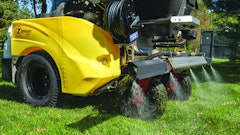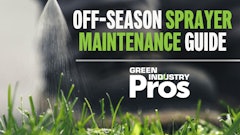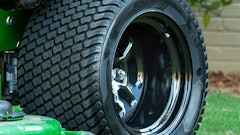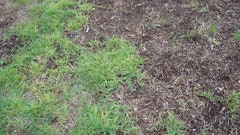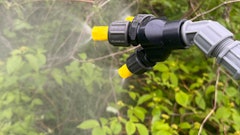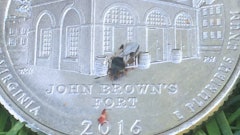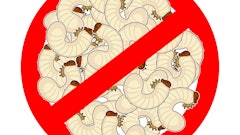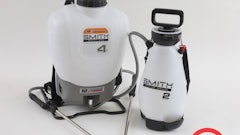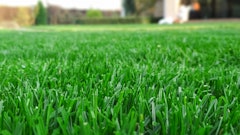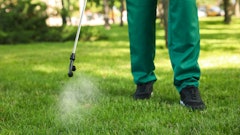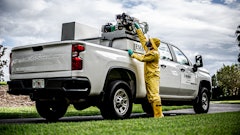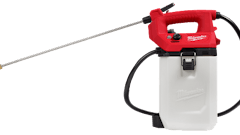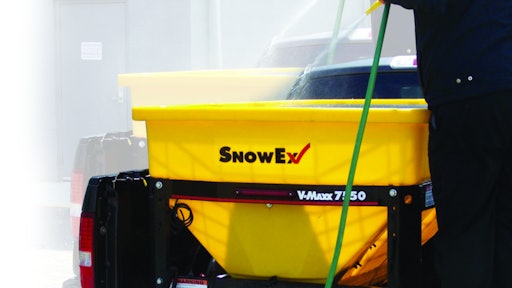
It’s easy as seasons quickly change to forget about the importance of proper routine equipment maintenance. Many operators remember at the most inopportune time. At the current year’s first snowfall, when digging out the spreader for use, they realize they missed one vital step—thorough equipment maintenance.
Proper spreader maintenance can make the season’s transition slightly less painful and likely more profitable. It can also greatly extend the spreader’s life. Maintenance begins preseason, ends postseason and is always ongoing. Just taking a little time to be sure spreaders are following their maintenance schedule as provided by the manufacturer can pay off big in the long run with time and money.
Preseason Maintenance
Preseason spreader maintenance should be easy if postseason maintenance was completed. Getting the equipment ready for what will hopefully be a busy season is imperative. Proper maintenance early on will allow the snow season to run that much more smoothly. The detailed list below consists of maintenance checks provided by Richard Burckardt of Douglas Dynamics L.L.C.
- Grease all connections
- Verify tightness of drive sprocket set screws and clutch sprocket mounting bolts
- Check drive belt condition, noting damage visible, cracked and broken teeth
- Check for damage and corrosion in motor connection terminals
- Remove the drive belt to spin the drive shaft bearings to survey condition (noise or roughness indicates possible failure)
- Grease bearings once in operable condition
- Check, and replace if necessary, the motor cap assembly seal
- Look for worn vanes on the spinner disk, replace if present
- Check to be sure all lights are working properly
Ongoing Maintenance
Proper ongoing maintenance can simplify preseason and postseason maintenance and likely keep equipment running well throughout the season. Many of the ongoing maintenance checks should be performed according to the hours of equipment usage.
- Grease all connections
- Empty and clean spreader after each use (most cleaning can be done with water and a pressure washer)
- Grease bearings on idler shaft, flanged bearings on drive shaft and spinner shaft bearings after every 10 hours of use
- Grease input shaft bearings on gear case and check that oil is level with fill hole after 50 hours
- Maintain belt tension according to the operator’s manual
- Check conveyor chain tension
Postseason Maintenance
When spreaders and equipment are worked hard through the winter months, it’s important to give them a good once over at the end of the season. By being sure you take care of the equipment properly at the end of the season with cleanup and maintenance as well as any necessary repairs, it can be ready to go when the next snow season is upon us.
- Grease all connections
- Empty and clean the spreader very thoroughly inside and out
- Grease all electrical connections and drive shaft bearings
- Apply oil or paint to all bare metal surfaces
- Place lid on hopper body and secure with latch
- Store in upright position (if stored outdoors, cover and raise unit).
Clean & Grease
Cleaning out the hopper and touching up any damage is most important with hoppers constructed of metal since residual salt will corrode the surface, leading to rust. In fact, with the highly corrosive nature of many deicing materials, an owner of a spreader featuring a metal hopper should clean it out after each use.
But even with corrosion-free polyethylene-constructed hoppers, one should thoroughly clean the hopper at the end of each season to remove caked-on salt and reveal any damaged components that need to be addressed. For the most part, water is all that is needed to properly clean the hopper and other components.
Beyond cleaning and the touchups that follow, another universal step for spreaders is greasing all necessary components. Though these components may differ from one unit to the next, all spreaders have moving parts and connectors that need to stay limber and receptive.
For any electric-powered spreaders or those with electric connections for components (such as lights), all terminals should be applied with a coat of dielectric grease. This helps prevent corrosion and ensures easy reconnection. Though this is a necessary post-season maintenance step, one should apply dielectric grease to the terminals anytime they are disconnected.
Furthermore, moving parts such as bearings, chains, conveyors, rollers, augers and so on should all be lubricated with a quality multi-purpose grease or oil. The same recommendation goes for any integrated grease fittings. Again, this requirement varies based on the type of spreader being maintained.
Information and photo courtesy of SnowEx.






